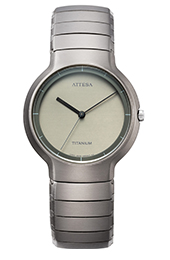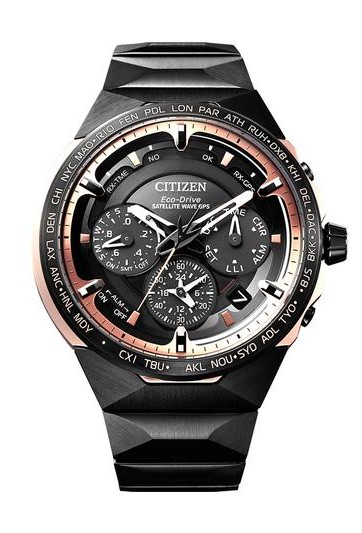On May 25th, 1961, President Kennedy announced before a special joint session of US Congress the dramatic and ambitious goal of sending an American safely to the moon by the end of the decade. At that point, the total time spent in space by an American was around 15 minutes. A lofty goal, to say the least.
You know the rest of the story. On July 20, 1969, American astronauts, Neil Armstrong and Edwin “Buzz” Aldrin, became the first humans ever to land on the moon. The accomplishment, which captivated the entire world, was the kind of moment that people bonded over. The horology world was directly affected, as well, to be certain.
How? Well at the time, the Citizen Watch Company, the Japanese global brand, was looking for a watch that everyone could wear, every day, comfortably. They were looking for the best material possible to go on a wrist. This was all happening during the space development with the first Apollo landing on the moon. And one of the materials used on the spacecraft was titanium.

This gave Citizen an idea. Titanium has several benefits, of course. It’s lighter than stainless steel, durable and less allergy-prone. The result was the launch of the Citizen X-8 Chronometer, in 1970, which was the world’s first titanium watch. Its grey, unpolished case used 99.6% pure titanium. The watch was powered by a chronometer-grade, electro-mechanical movement. Less than 2,000 pieces were available due to the challenge of mass-producing titanium cases, at the time. Prior to that, besides the use of precious metals, many watch cases were made from plated brass. Stainless steel watches came later on, in the 1970s.

Over the years, Citizen continued to experiment with titanium, pioneering new techniques to process the metal. Titanium is difficult to process and presented a genuine challenge. Compared to other metals, it’s not easy to mold, grind or polish, and is prone to scratching while giving off a rough, matte finish, so it wasn’t used in the watch industry. Finally, in 1987, with the launch of the Attesa collection, Citizen started to release titanium watches with a soft lustrous finish – a definite upgrade.
This advancement eventually led Citizen to develop Duratect, a surface-hardening treatment, introduced in 2000, that when applied to titanium, produced a finish that Citizen claims is five times harder than that of stainless steel. The idea was to protect the watch with a ‘proprietary surface-hardening technology’. The Duratect result was a scratch-resistant, high-polished surface in a vast array of colors.
Up to date, the culmination of Citizen’s efforts to master titanium has been the creation of Super Titanium, a registered trademark for a material that combines the brand’s titanium-processing technologies and the Duratect surface-hardening process. Super Titanium retains the original properties of lightness and smoothness on the skin, but adds strength, hardness and beauty to the titanium, as well.

After more than 50 years, of history, using titanium, Citizen, as a brand, is still constantly progressing and pushing to improve their technologies. To celebrate, Citizen launched the 50th anniversary of its Super Titanium watch, in December 2020, with the introduction of a 550-piece limited-edition version called Citizen Titanium Technology 50th Anniversary Satellite Wave GPS F950. Even without the satellite technology, the watch is accurate to +/- five seconds a month, but it’s the satellites that take away any sort of variation, thanks to regular synchronization. Anywhere in the world, three seconds is all it takes for the watch to communicate with a satellite and self-correct itself to the appropriate time. It’s easy to forget you’re wearing a watch at all thanks to the titanium its case and bracelet are fashioned from. For its size, at 47.5mm, the watch is incredibly lightweight. The Satellite Wave GPS F950 Titanium 50th Anniversary Limited Edition retails for $5,000 USD.
The Super Titanium being used in the watch is also being used in the HAKUTO-R lunar exploration program; an initiative by iSpace – one of Japan’s leading private space exploration firms, headquartered in Tokyo. Super-Titanium will be applied to all the Titanium components of the HAKUTO-R lunar lander and lunar rover to improve the reliability and environmental resistance of the spacecraft’s titanium parts.
Times Ticking has been in operation for more than 30 years, since 1982. We have performed watch repair for customers both locally and internationally. If it Ticks! We KNOW it! Our team of watch repair technicians have a combined experience in watchmaking of over 120 years.

